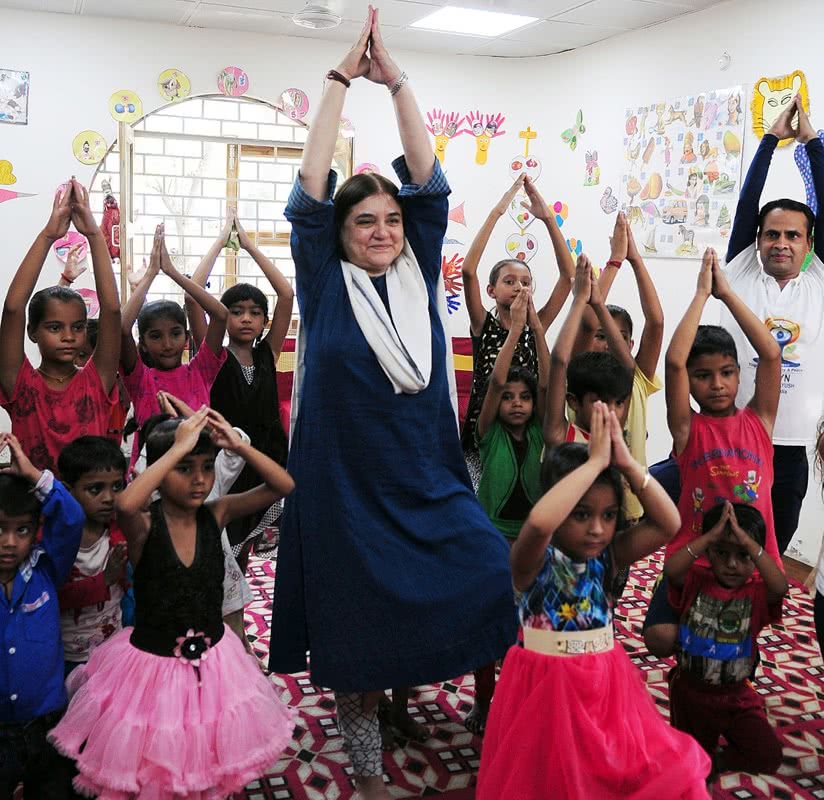
To Be a Coach for Children
By Vanessa Braun
To be a coach for children is to see the individual potential and to create the space for them to rise to it.
In February I attended The Leader’s Discipline™, a two-day training presented by Roy Group in Victoria, BC. One of the many things I took away from the training was how applicable it was not only to leading my teaching team but also to my work in the classroom with the kids. Though I hadn’t thought about it this way before, a vast majority of our time is dedicated to “coaching” or empowering children to be the best they can be.
As the founder of Storyoga, I can proudly say we believe in asking children the right kinds of questions so that they may draw their own conclusions. Rather than giving them answers, we believe that their ideas and understanding of the world is of equal value and that their voices are meant to be heard. We believe in giving children the tools to problem-solve and the skills to stand up for themselves. Rather than stepping in to fix something, we see conflict in the classroom an opportunity for growth. Essentially, we believe in supporting children to be their own advocates and to know their place in the world.
How incredible it is to be gifted this kind of an opportunity at such a young age. To be valued, to be supported, and to be heard.
What I also realized after taking this training is that we hold our children to a high standard. We expect a lot of them, and in return, we see them grow by leaps and bounds. To be a coach for children is to see the individual potential and to create the space for them to rise to it.
To be a coach for children is to ask questions that encourage reflection and may even challenge their thinking.
Often children will ask why things are the way they are in the world. Rather than simply giving them an answer, keep the conversation alive. Put the question back to them and ask why they think it is so. Not only does this create a shared dialogue rich in learning, but it also opens the doors to possibility while fostering creativity and imagination in the process of doing so.
To be a coach for children is to hold each child accountable to being their best self.
To foster the dispositions of kindness, compassion, truthfulness, and to see the good in one another. Recently we had a child speak negatively of another child in the class. One child commented on another child as always being mean. Seeing that the child who had made this comment had the qualities of being a leader herself, I asked, “Is this always true? Is this child always mean?” I then followed with, “Is it true today?” She stopped to consider my question and after some back and forth, answered by saying no. It was a powerful moment for both of us, which changed the course of her thinking and action in the class.
To be a coach for children is to help them trust their own wisdom — what they already know.
On another occasion during journal writing, one of our students asked me to draw him a heart. I put it back to him and said, “What do you think a heart looks like?” He smiled and asked again for me to draw it. I was honest with him in my response, “I’m not going to draw it for you. I think you know how.” I asked him to close his eyes and imagine a heart in his mind. Then to open his eyes and draw what he saw. He couldn’t bring himself to do it. He was stuck on wanting it done right and for me to do it for him. While it would have been very easy for me to draw the heart, I simply wasn’t going to. By not drawing it for him, what I was really saying was, I believe in you and your abilities. I was rooting for him to trust in his own wisdom.
Too often we look outside ourselves for validation and for answers. This starts at a young age. It makes me wonder, where would I have been in life if someone taught me at an early age to trust myself? If someone created the space for my own knowing to come through? This doesn’t just apply to drawing hearts. It applies to knowing how to stand up for what you believe in, to be brave, and to have the courage to be who you really are.
Whether it’s learning how to draw a heart or how to walk across a balance beam, we must give children the space to rise to the occasion. We must challenge their thinking and their comfort level, and present opportunities for them to reach new heights. When we do this, not only does their confidence increase but their level of self-efficacy and overall belief in their abilities starts to permeate.
Ask questions that provoke a sense of wonder; keep the conversation alive. Encourage reflective thinking, and foster the dispositions of kindness, compassion, truthfulness, and a loving heart. We all need a chance to shine. Be the spark that ignites the light in children and allow them to shine bright.
Vanessa Braun is the founder of Storyoga.
For upcoming sessions of The Leader’s Discipline, see Open Courses.
